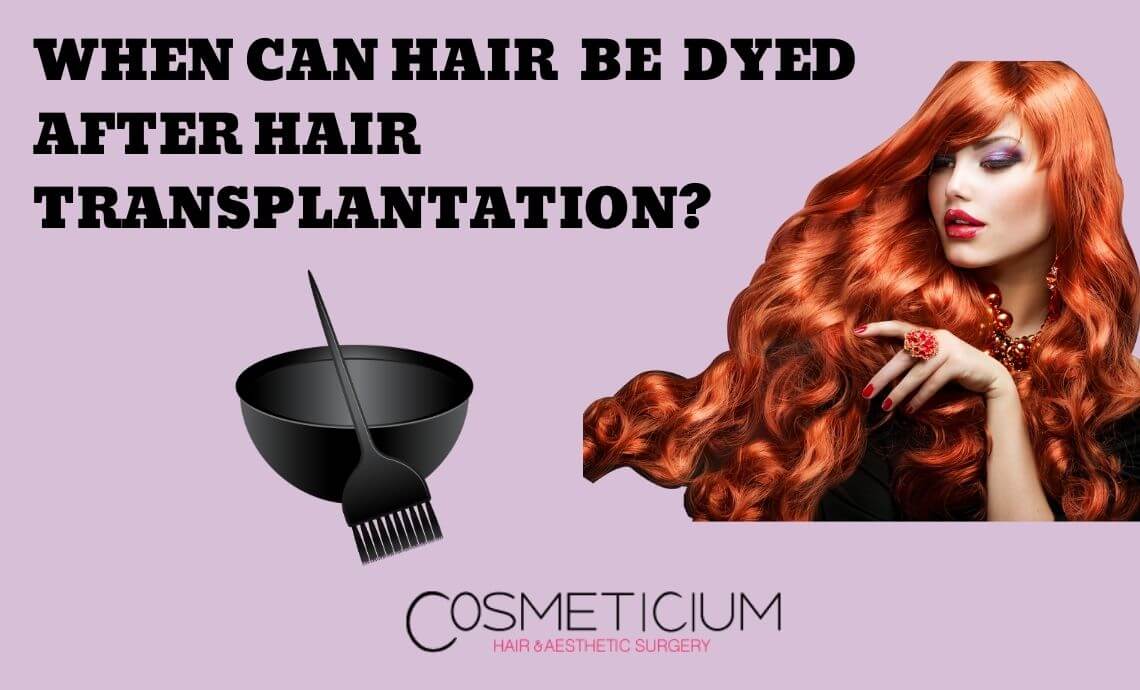There are different questions about which people who are considering to have a hair transplantation wonder. One of them is about hair coloring after hair transplantation. Is hair dying appropriate after hair transplantation? How long should be waited for? What should be paid attention to? All the details are in our article.
Table of Contents
What Color Will My Newly Grown Hair Be After Hair Transplantation?
There are cases when the hair on the scalp is not all the same color. It is a common situation that the hair turns gray over time, especially due to old age. Those who have hair of such different colors are very curious about what color their newly grown hair will be.
Hair transplantation is the transfer of the hair with its roots in the donor area to the bald area. Therefore, the color of the graft taken will appear in the same color in the transplanted area. However, it should not be forgotten that the hair may change color again depending on old age.
We should mention about another point regarding this question. Those whose hair has partially grayed need a specialist clinic and surgeon for hair transplantation. Because the hair transplantation of the white hair is a procedure that requires much more attention. The most important reason for this is that white hair does cannot be seen as easily as the black ones and the balance between hair colors is hard to maintain. A surgeon experienced in this field performs hair transplantation without disturbing the balance in the general appearance of the hair, and the final results meet expectations.
You May Also Like: Overview of the Hair Transplantation Process
Can I Dye My Hair After Hair Transplantation?
Can hair be dyed after hair transplantation? This is one of the most frequently asked questions that the people thinking of having hair transplantation wonder about. Actually, the answer is extremely simple. As is known, the result after hair transplantation is completely indistinguishable from natural hair. You can do all the operations that you can do on your natural hair. Yes, you can dye your hair after the hair transplantation, but not right after it! You have to keep in mind that it takes a while for this. Well, when can I dye my hair after hair transplantation?

When Can Hair Be Dyed After Hair Transplantation?
There is no difference between transplanted hair and natural hair. The transplanted hair may even be healthier. However, this does not mean that the hair can be dyed at any time. It is necessary to wait for a certain period of time to dye it after hair transplantation.
The period just after hair transplantation is extremely sensitive in terms of grafts. They try to adjust to their new place and develop their own blood supply. This means that the transplanted hair follicles are unprotected. In such a period, if you dye your hair and expose tthe unprotected hair to chemicals, the result may be extremely upsetting. Dyes containing different types of chemical substances adversely affect newly transplanted hair and may even cause hair follicles to die. Therefore, hair follicles should not be dyed without creating their own blood resources. So when does this situation occur?
As it is known, shock hair loss occurs after hair transplantation and some of the transplanted hair is lost. After this process, hair follicles begin to develop and create their own resources. New hair starts to grow after 4-6 weeks. Hair growth is a sign showing that everything is fine with the hair follicles. However, after getting this sign, you should not hurry and wait a few months. Experts state that at least 2-4 months should be waited for hair coloring after hair transplantation. Remember that you can get the most accurate answer at this point from your doctor.
You May Also Like: Why Is Turkey the Best Place to Have a Hair Transplant?
Can I Dye My Hair in the Color that I Want After Hair Transplantation?
You can dye your hair in the color that you want. However, do not forget to get advice from your doctor for the brand preferences. It should not be forgotten that poor quality dyes are a serious threat to hair and should be avoided.

